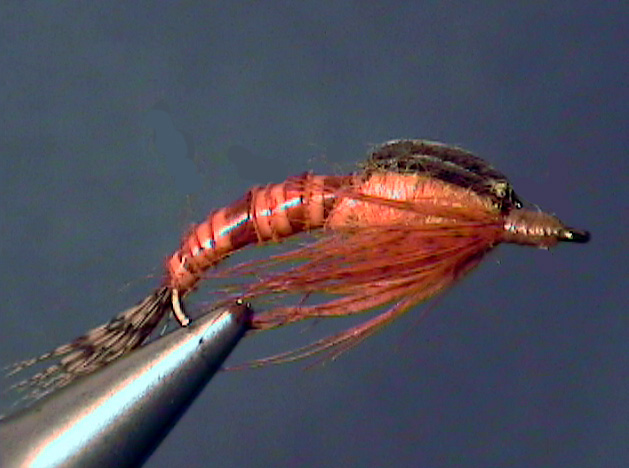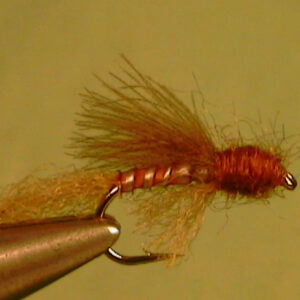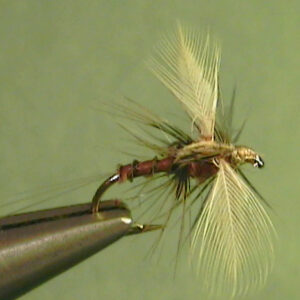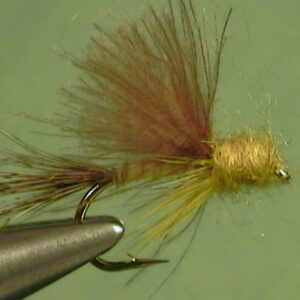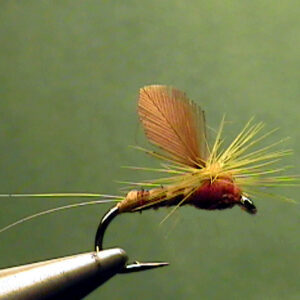Hook Size 10/12
The American March Browns are clinger nymphs. Most of their life the flat like
nymphs are doing what their name implies – clinging to the undersides of rocks
and are not readily available to trout. These nymphs are strong. They can move
around on the streambed very fast compared to other nymphs. When they want
to, they are able to cling to the rocks to the point you would have to pry them
loose if you tried to remove one. They remind me of a crawfish. They run
backwards if you approach them from the front.
Like all clinger nymphs, they migrate from their fast water habitat to the slower
moving, calmer water nearby when it is near the time for them to emerge.
Remember that the Quill Gordon, another clinger, does this. Even the
Hendricksons and Red Quills that are crawlers move from their moderately
flowing habitat to slower water to hatch. The difference is that the March Browns
usually move to even calmer, slower moving water. Select the slowest moving,
calmest water you can find fairly close to the fast water runs and riffles and that
is where they will hatch. This may be pockets behind boulders and along uneven
banks, the heads and tail ends of pools, or anywhere there is calm water nearby
fast water. Just about anywhere there is fast water in the Smokies, there are
March Browns. The problem becomes a matter of timing. As we said before, they
may move out of the fast water to hatch anytime during a long period of time.
Presentation:
Nymph imitations of most clinger nymphs rarely work except prior to the hatch. If
you do want to try them at other times, fish them heavily weighted, right on the
bottom at the edges or seams of the fast moving riffles and runs.
During the long hatch period, fish imitations of the nymph on the bottom moving
the fly from the fast water into the adjacent slower moving water. Although this
may bring some good results, most likely you could employ other strategies
or imitate other insects during this long hatch period that would have a
much better chance of success. To make this simple, I am not
recommending it unless you happen to find a large concentration of March
Browns hatching from a certain area of a stream. Then I would suggest trying
the nymph during the times of day the hatch is not actually underway.
